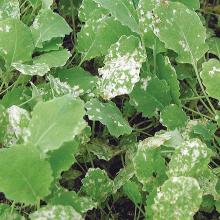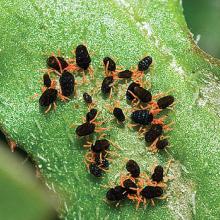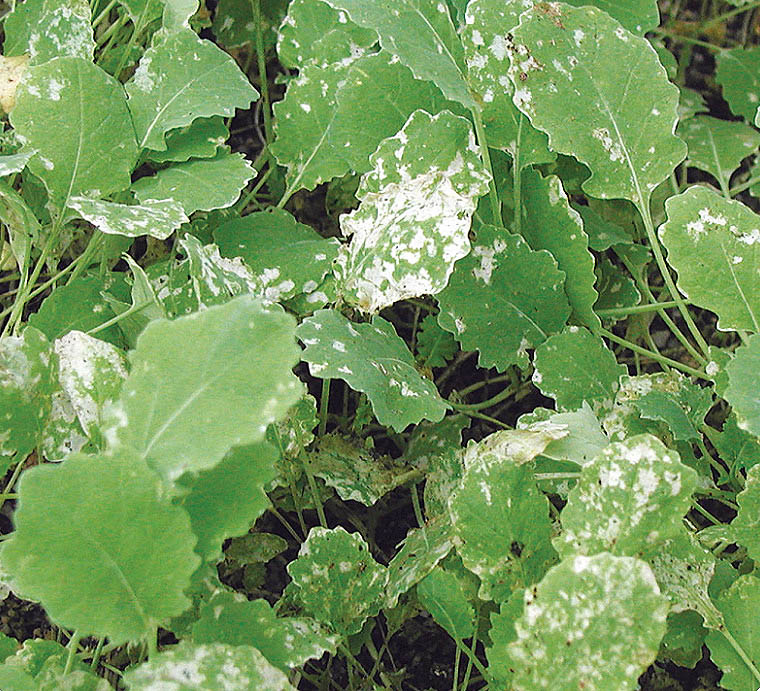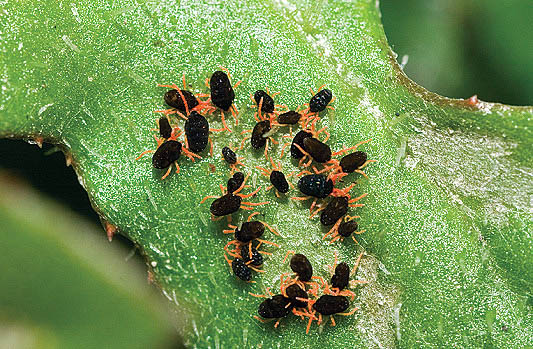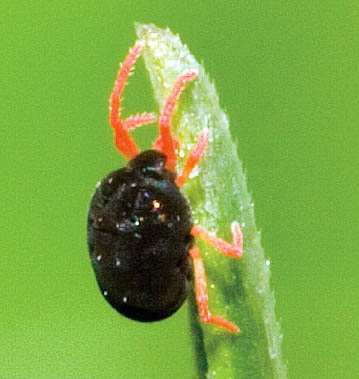Redlegged Earth Mite
Halotydeus destructor
Adults are 1mm long and have eight red-orange legs. Adults and nymphs have a velvety black body. Newly hatched mites are pinkish-orange with six legs and are only 0.2mm long. Redlegged earth mites generally feed in large groups of up to 30 individuals. Mites are active from Autumn to late Spring and are found in southern Australia, but not in northern NSW.
It is especially important to inspect crops regularly in the first three to five weeks after sowing. When disturbed during feeding they will drop to the ground and seek shelter. They will crawl into cracks in the ground to avoid heat and cold. Mites are best detected feeding on the leaves in the morning or on overcast days. In the warmer part of the day redlegged earth mites tend to gather at the base of plants, sheltering in leaf sheaths and under debris. Foliage sprays are applied once the crop has emerged and are generally an effective method of control.
They also feed on a range of weed species including Paterson's curse, ox-tongue and capeweed. Feeding causes a silver or white discolouration of leaves and distortion or shrivelling in severe infestations. Affected seedlings can die at emergence with high mite populations.
At least 19 predators and one pathogen are known to attack earth mites in eastern Australia. The chemical impact on predator species can be minimised by choosing a spray that has least impact and by reducing the number of chemical applications. The French Anystis mite is the most effective predator but is limited in its distribution. Snout mites will also prey upon this pest and help keep populations in check.
Using cultural control methods can decrease the need for chemical control. Rotating crops or pastures with non-host crops or cultivation can reduce pest colonisation.
CESAR
 Skip to main content
Skip to main content
